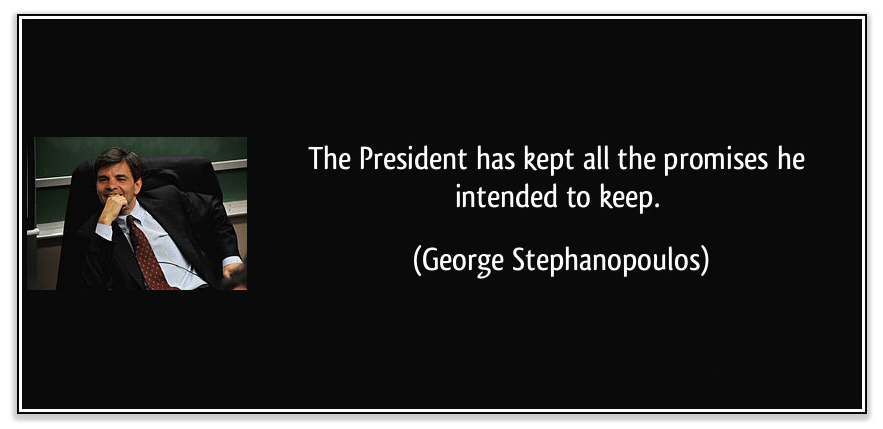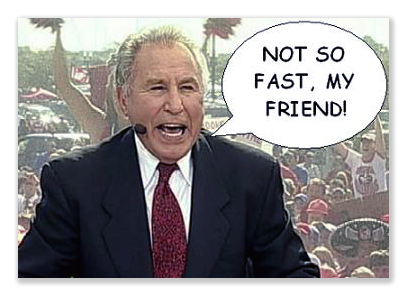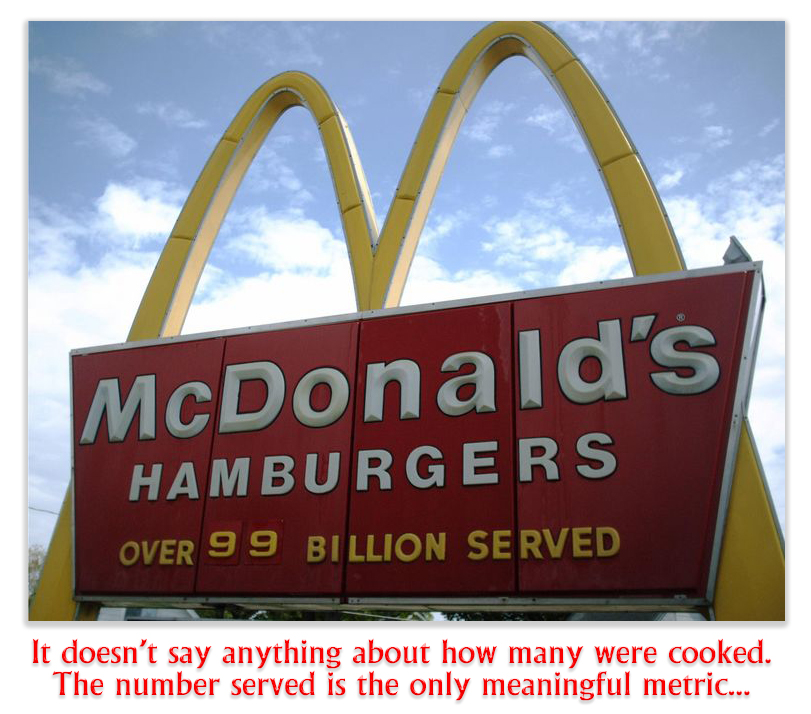We post news and comment on federal criminal justice issues, focused primarily on trial and post-conviction matters, legislative initiatives, and sentencing issues.
KEEPING THE PROMISES YOU INTEND TO KEEP
 George Stephanopoulos famously defended his former boss, President Bill Clinton, as a guy who had “kept all of the promises he intended to keep.” You could forgive inmates seeking a reduction of sentence under 18 USC 3582(c)(2) for feeling the same way about the Supreme Court.
George Stephanopoulos famously defended his former boss, President Bill Clinton, as a guy who had “kept all of the promises he intended to keep.” You could forgive inmates seeking a reduction of sentence under 18 USC 3582(c)(2) for feeling the same way about the Supreme Court.
Not that the Court should get all of the blame. Sec. 3582(c)(2) is one of those limited exceptions to the general rule that when a conviction is final, it is final. Congress designed the exception into the Sentencing Reform Act of 1984, providing that when the Sentencing Commission changed a sentencing guideline after a defendant’s conviction was final and specifically provided that the change should be retroactive to final convictions, an inmate could petition the court to apply the change. The district court could apply it if the effect would be to reduce the sentence, but even then the judge retained discretion whether to apply it or not.
Those are a lot of hoops through which a defendant must jump. Many have succeeded, inasmuch as the Sentencing Commission has reduced drug quantity guidelines three times since 2007. Of course, when prisoners asked for the reduction, they often threw in a lot of extraneous errors, omissions and complaints about their original sentencings that they wanted the judge to fix as well.
 Judges resisted turning a very limited, pointed sentence reduction proceedings into a sentencing mulligan. The issue found its way to the Supreme Court in 2010. There, the Court ruled in Dillon v. United States that the 3582(c)(2) proceeding was a limited resentencing where no factual findings from the first sentencing could be revisited, no new developments could be addressed, and no additional wrongs – old or new – could be redressed. Instead, the district court took the record as it was, except for the new lower guideline, and sentenced according to the newly adjusted guideline range.
Judges resisted turning a very limited, pointed sentence reduction proceedings into a sentencing mulligan. The issue found its way to the Supreme Court in 2010. There, the Court ruled in Dillon v. United States that the 3582(c)(2) proceeding was a limited resentencing where no factual findings from the first sentencing could be revisited, no new developments could be addressed, and no additional wrongs – old or new – could be redressed. Instead, the district court took the record as it was, except for the new lower guideline, and sentenced according to the newly adjusted guideline range.
All right. Prisoners could live with that. The Supreme Court promised that there would no new fact-finding, but instead the 3582(c)(2) proceeding would run off the record that closed at conviction. Since the Dillon case, the Sentencing Commission made the 2014 2-level reduction in drug offenses retroactive, and almost 30,000 inmates followed the Dillon playbook and received reductions.
One of the people seeking the reduction – although not on the list of 30,000 successful inmates – was Raul Mercado-Moreno. Raul had been convicted of manufacturing and distributing methamphetamine, a lot of it. Exactly how much was the question. At the time, the guidelines’ top range of 38 was reserved for people whose cases involved more than 1.5 kilograms of meth. At Raul’s sentencing, the judge held that Raul had distributed more than 4.3 kilos. The number was not reached with a lot of precision, because it did not much matter: with the bottom of his range being 1.5 kilos and the top of the range being infinity, a rough number seemed good enough.
Rough or not, the 4.3 kilos was the record finding when Raul was sentenced, and he was confident it would continue to be the record finding for his 3582(c)(2) motion.
But the 2014 reduction in drug quantities changed the equation. Now, Offense Level 38 was reserved for more than 4.5 kilos of actual methamphetamine or more. The range of 1.5 to 4.5 was set at Level 36. Raul’s 4.3 kilos would put him within this lower range, and would yield a sentence reduction of at least 22 months.
Raul filed his petition for sentence reduction in front of a different district judge, because his first one had retired. Relying on the 4.3-kilogram quantity the district court had found at sentencing, Raul argued he was entitled to a new sentence of 188 months instead of the 210 he had been given.
 “Not so fast!” the new judge said. That 4.3-kilo figure was a quick and dirty estimate of how much Raul had distributed. It never, the district court said, was intended to represent the amount Raul had distributed AND manufactured. When the manufactured meth was included, the court found, Raul’s quantity was way over 4.5 kilograms, which means his offense level stayed at Level 38, and he thus had nothing coming.
“Not so fast!” the new judge said. That 4.3-kilo figure was a quick and dirty estimate of how much Raul had distributed. It never, the district court said, was intended to represent the amount Raul had distributed AND manufactured. When the manufactured meth was included, the court found, Raul’s quantity was way over 4.5 kilograms, which means his offense level stayed at Level 38, and he thus had nothing coming.
Raul appealed, arguing that the district court had found the weight of 4.3 kilos at sentencing, and that Dillon meant the new judge had to dance with girl who brung the old judge to the dance.
Monday, the 9th Circuit disagreed with Raul. A district court is bound by the facts it found at sentencing, the Circuit admitted, but only where those are complete. “In those cases where a sentencing court’s quantity finding is ambiguous or incomplete,” the appeals panel said, “a district court may need to identify the quantity attributable to the defendant with more precision to compare it against the revised drug quantity threshold under the relevant Guidelines amendment. The Supreme Court indicated that such fact-finding was permissible in Dillon.”
Here, the 9th said, the original fact-finding was incomplete because the district court found that Raul had distributed at least 4.3 kilograms without ever mentioning how much Raul might have manufactured. “Section 3582(c)(2)’s eligibility inquiry may require a district court to supplement the original sentencing court’s drug quantity findings to ‘determine the amended guideline range that would have been applicable’ to the defendant in light of a retroactive Guidelines amendment.”
 It seems a lot like the courts are only keeping the part of Dillon’s promise they intended to keep. We would be more comfortable with the holding if it were the original judge ruling on the 3582(c)(2) motion. The original judge would presumably know what he had meant when he found the 4.3 kilo figure. It seems to us that the quantity of meth that Raul manufactured would be subsumed by the quantity he distributed. Clandestine labs don’t usually keep meth on the warehouse shelf. It’s sort of like McDonald’s: the sign in front does not count how many hamburgers were cooked. Rather, it counts the number served. So we think it’s a stretch to suggest there is a heretofore undeclared amount of meth that was made but not sold.
It seems a lot like the courts are only keeping the part of Dillon’s promise they intended to keep. We would be more comfortable with the holding if it were the original judge ruling on the 3582(c)(2) motion. The original judge would presumably know what he had meant when he found the 4.3 kilo figure. It seems to us that the quantity of meth that Raul manufactured would be subsumed by the quantity he distributed. Clandestine labs don’t usually keep meth on the warehouse shelf. It’s sort of like McDonald’s: the sign in front does not count how many hamburgers were cooked. Rather, it counts the number served. So we think it’s a stretch to suggest there is a heretofore undeclared amount of meth that was made but not sold.
On the other hand, the district judge was fully empowered to look at the original 4.3 kilos found to be the amount distributed, and to conclude that that the defendant should not benefit from the sentence reduction, even if he were eligible for it. Thus, to a great extent, this is a case of “no harm, no foul.” But it is troubling that without notice or opportunity to be heard, a district court may declare a prior factual finding incomplete, and revise it upward.
United States v. Mercado-Moreno, Case No. 15-10545 (9th Cir., August 28, 2017)
– Thomas L. Root

